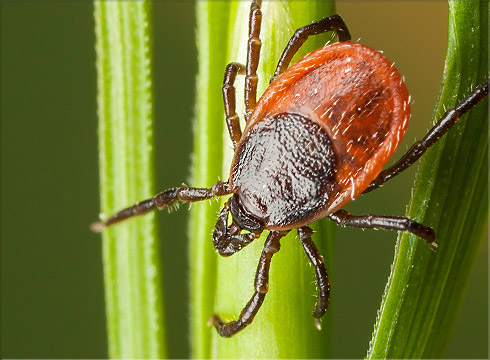
About The Pest
Formerly known as the deer tick, the blacklegged tick is named for its dark legs, which are in contrast to its pale body. During the winter, adult blacklegged ticks feed primarily on the blood of white-tailed deer. In the spring, female blacklegged ticks will drop from their host to lay their eggs – on average, a female will lay around 3,000 eggs. Nymphs prefer to feed on mice, squirrels, raccoons, skunks, dogs, humans and birds. Blacklegged ticks prefer to hide in tall grasses and shrubs while waiting for a passing host. Blacklegged ticks start as eggs and then go through larval and nymphal stages before maturing. Blacklegged ticks are a vector of anaplasmosis, babesiosis and Lyme disease – disease transmission to a host happens during nymph and adult feeding sessions.
Seasonality
The Blacklegged Tick is mostly active during March through April and September through October.
